 Miscellaneous
Miscellaneous  Miscellaneous
Miscellaneous  Animals
Animals 10 Strange Attempts to Smuggle Animals
 Travel
Travel 10 Natural Rock Formations That Will Make You Do a Double Take
 Movies and TV
Movies and TV 10 Actors Hidden in Your Favorite Movies
 Our World
Our World 10 Science Facts That Will Change How You Look at the World
 Pop Culture
Pop Culture 10 Incredible Female Comic Book Artists
 Crime
Crime 10 Terrifying Serial Killers from Centuries Ago
 Technology
Technology 10 Hilariously Over-Engineered Solutions to Simple Problems
 Miscellaneous
Miscellaneous 10 Ironic News Stories Straight out of an Alanis Morissette Song
 Politics
Politics 10 Lesser-Known Far-Right Groups of the 21st Century
 Miscellaneous
Miscellaneous 10 Undeniable Signs That People’s Views of Mushrooms Are Changing
 Animals
Animals 10 Strange Attempts to Smuggle Animals
 Travel
Travel 10 Natural Rock Formations That Will Make You Do a Double Take
Who's Behind Listverse?

Jamie Frater
Head Editor
Jamie founded Listverse due to an insatiable desire to share fascinating, obscure, and bizarre facts. He has been a guest speaker on numerous national radio and television stations and is a five time published author.
More About Us Movies and TV
Movies and TV 10 Actors Hidden in Your Favorite Movies
 Our World
Our World 10 Science Facts That Will Change How You Look at the World
 Pop Culture
Pop Culture 10 Incredible Female Comic Book Artists
 Crime
Crime 10 Terrifying Serial Killers from Centuries Ago
 Technology
Technology 10 Hilariously Over-Engineered Solutions to Simple Problems
 Miscellaneous
Miscellaneous 10 Ironic News Stories Straight out of an Alanis Morissette Song
 Politics
Politics 10 Lesser-Known Far-Right Groups of the 21st Century
Top 10 Spookiest Submarines
Humans have been sailing for millennia, but submarines as we know them today are a more recent innovation. It takes a brave soul to journey in one of these claustrophobic underwater vessels, surrounded on all sides by the crushing pressure of the sea.
We all know about the Yellow Submarine, but most people don’t know about the following tales of intrigue and mystery from deep underwater, and sometimes right at the surface. Ghosts, sea monsters, UFOs, and skeletons aren’t just for pirate ships, or spaceships for that matter. Submarines have their own stories of unexplained lore.
10 U-505
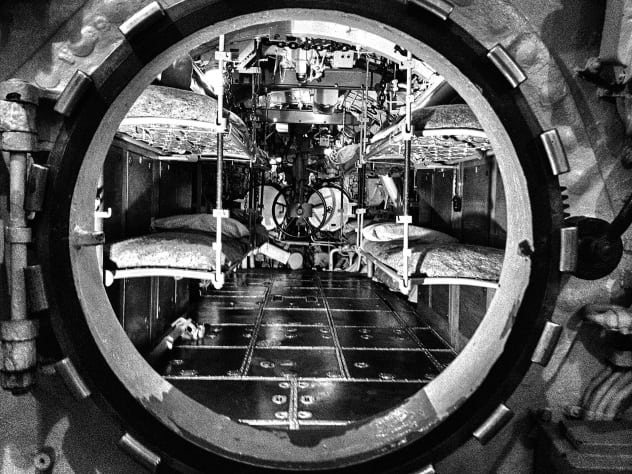
On October 24, 1943, U-505 was bombed with depth charges by British destroyers. In the midst of the attack, Peter Zschech, the commander of the sub, shot himself in the head in front of his crew in the control room.
In an account of the day’s events, a crewman named Hans Goebler notes that Zschech didn’t fully die by the gunshot and was making loud sounds after he shot himself, making it easier for the British to locate them by sonar. He then describes someone grabbing a pillow and placing it over Zschech’s mouth, to the dismay of the crew doctor, who protested, but two other crew members held the pillow firmly until Zschech was silent.[1]
Zschech’s second-in-command took over and led the crew through the attack, and everyone on board survived but Zschech. The entry from the logbook that day reads “Kommandant tot,” meaning “Commanding Officer dead.”
9 UB-65
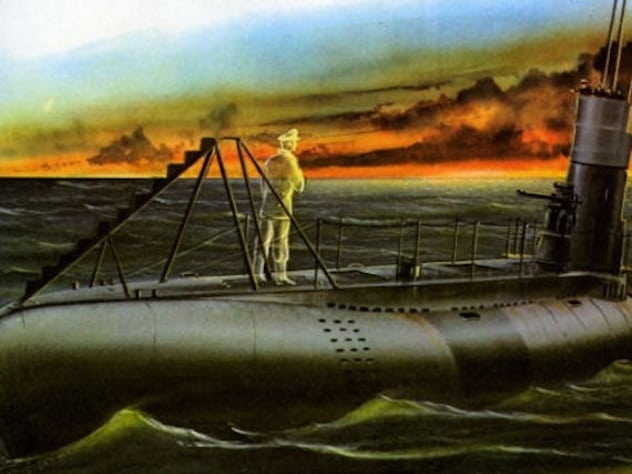
Another German U-boat, this time from World War I, that had uncannily morbid luck was UB-65.
Before she set out to sea, a torpedo exploded, injuring several crewmen and killing the second officer, Lieutenant Richter. Soon after she left port, a lookout who was in the conning tower reported seeing Lieutenant Richter, returned to haunt the boat, standing on the deck. Maybe it was the long, lonely days at sea, but crewmen kept reporting sightings of him, and things got so bad that the higher-ups had to step in. The Imperial Navy ordered a pastor to kick the ghost out.[2]
In UB-65 ’s final stroke of terrible luck, an American submarine found the U-boat along the Irish coast. As the Americans prepared to attack, they were shocked to see UB-65 explode on its own before they fired. One American officer also reported seeing a silhouette on the deck wearing a German officer’s overcoat, with folded arms, standing sturdy while the boat sank.
8 UB-85
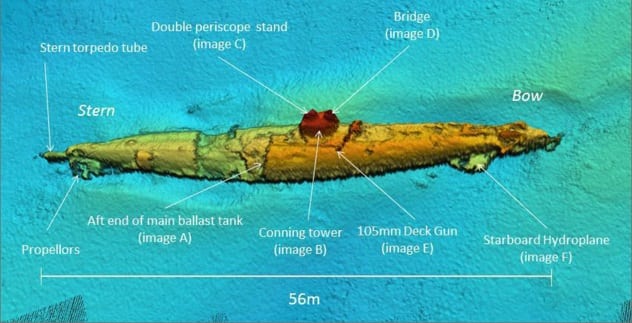
Who doesn’t love a good sea monster story? On April 30, 1918, the crew of the German U-boat UB-85 surrendered willingly to a British patrol boat as their sub sank. The Germans’ commanding officer, Captain Krech, had a strange story about why they didn’t resist: He said that the previous night, while UB-85 was surfaced, a “strange beast” had crashed out of the water and attached itself to the deck, its enormous weight nearly sinking the boat. The beast, according to Krech, had “large eyes, set in a horny sort of skull.” The crew started firing their sidearms at it, eventually hurting it enough to weaken its grip. The monster let go, but it left the deck so damaged that UB-85 couldn’t dive.[3]
In 2016, the wreck of UB-85 was discovered, bringing attention to what could have possibly happened back in 1918. Was it a sea monster, or something else?
Historians recently uncovered an interview with another crew member which tells us what might have really happened: Apparently, Krech had a heater installed in the officers’ quarters. The cables for this heater ran through a watertight hatch, making it vulnerable to flooding. It’s likely that Krech’s story is just a “sea monster sank my submarine” excuse for his own indiscretion, though believers still insist it was a kraken-like monster.
7 The H.L. Hunley
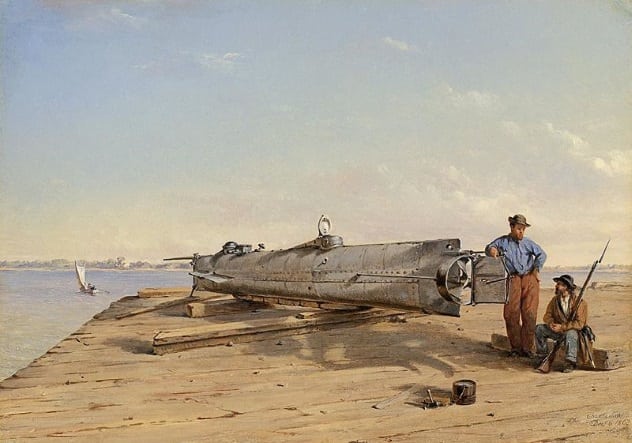
Picture this: It’s 2000, and you’re a diver going underwater to help pull out the Confederate submarine H.L. Hunley, the first combat submarine ever to sink an enemy warship. The submarine disappeared the same day it sank the USS Housatonic, on February 17, 1864.
When you get to peek inside the craft, you are struck by the sight of eight skeletons, each manning a respective submarine station, none of which appear to have been alarmed by sinking or have moved from their posts. What could have caused them to stay where they were, perfectly preserved in a strange image of action?
The answer scientists found is that the H.L. Hunley suffered from the explosion of its own torpedo, which was detonated by ramming the Housatonic, knocking them unconscious. Unable to guide the sub or do anything else, they remained at their stations, not to be discovered for 136 years.[4] The H.L. Hunley came to rest about 300 meters (1,000 ft) away from the wreck of the Housatonic.
6 USS Trepang
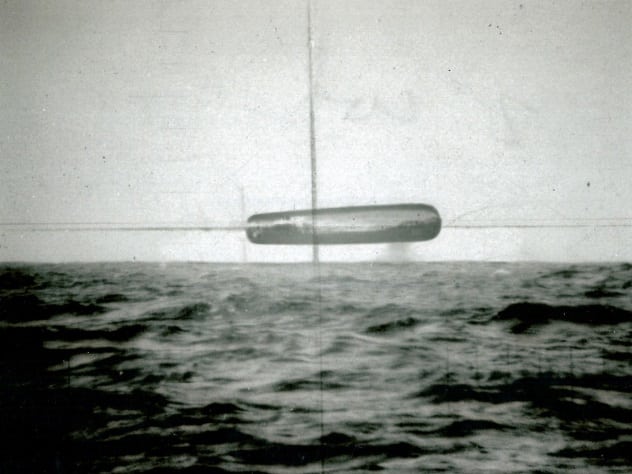
Submarines are the last place you would think you’d see a UFO. But in 2015, mysterious photographs published to the French magazine Top Secret showed just that: a cigar-shaped unidentified flying object.[5]
The photos were reportedly taken in March 1971 by an officer aboard the Trepang in the middle of the ocean between Iceland and Jan Mayen, a barely inhabited Norwegian island. At the time, the Trepang was conducting a routine expedition and apparently found the UFO by accident, as it was spotted through the periscope by officer John Klika.
A British UFO investigator named Nigel Watson has said that similar-looking cigar-shaped aircraft have been spotted and reported since 1896, and reports have come from all across the world. While he is skeptical of the authenticity of the photographs, we can dream, right?
5 Quester I
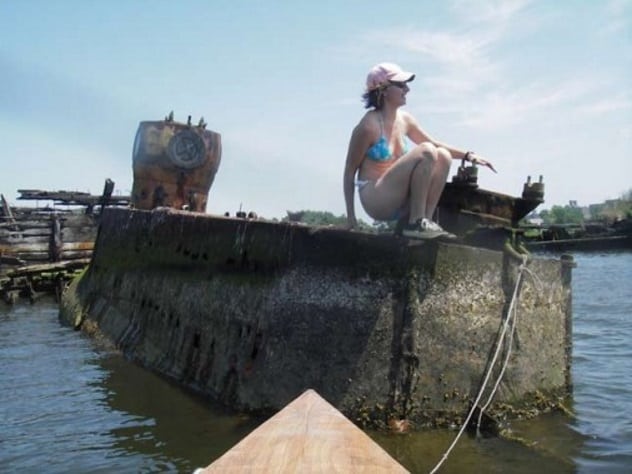
Have you ever seen the shipwrecks on Coney Island Creek in New York City? They look like skeletons could pop out at any moment. The most unusual of these ships is a submarine that has a rusty orangish-yellow conning tower sticking up. This submarine, called the Quester I, was built for a purpose that never ended up being fulfilled: to rescue treasure from a sunken ocean liner that lies under the Atlantic off the coast of Massachusetts, the Andrea Doria, which sank in 1956.
In the late 1960s, Jerry Bianco set about building a submarine that could submerge to the sunken ship and salvage the valuables. He painted the sub yellow not because of the famous Beatles song but because the yellow paint was the best deal he could find.
On October 19, 1970, after four years of hard work, the sub was lowered into Coney Island Creek. The crane operator wasn’t supposed to lower the sub entirely into the water, but he did. Bianco had only removed the ballast from one side as money-saving measure, so the sub ended up tipping on its side so much that Bianco’s investors lost faith in its ability to float, and it never left the creek. The Quester I still sits in the same spot today.[6]
4 K-219

On October 3, 1986, Soviet submarine K-129 was patrolling in the Atlantic Ocean about 1,100 kilometers (700 mi) northeast of Bermuda. An engineer noticed a leak from a plug in the torpedo room and tried to stop it. Water started rushing in. Eventually, a torpedo casing split, and the resulting explosion killed three crew members and started an enormous flood. One of the crewmen gave his life to enter the nuclear compartment to shut down the engine, and they were able to surface.
When the captain opened the hatch, however, he noticed something strange: There appeared to be two long scratch marks along the side of the submarine, but they hadn’t collided with anything along the way. The Soviet Navy suspected that the cause of the scratch and explosion was an American submarine patrolling nearby, the USS Augusta. The US Navy, to this day, denies that they attacked K-219.
In 2010, Soviet captain Nikolai Tushin gave an interview about what he believes collided with K-219 instead: an unidentified underwater object called a “Quacker,” called that because of the sound it makes, a cross between a duck quack and a frog croak. These odd sounds started to be noticed by sonar operators during the Cold War, likely because of the advances made in sonar during that time.[7] If a Quacker is responsible, it can still visit K-219 at the bottom of the sea today.
3 U-166
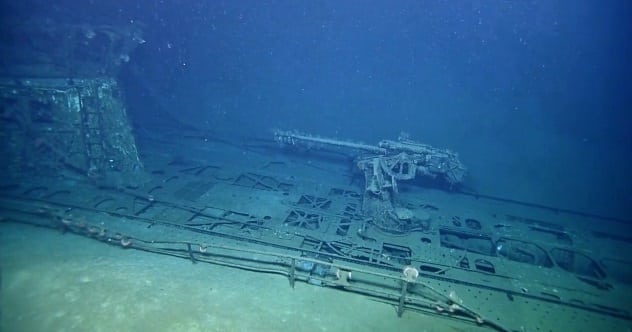
Most people know about the Japanese attack on Pearl Harbor in 1941, but less known is the German U-boat patrol in the Gulf of Mexico in an effort to sink American merchant ships right on their home shore.
One of the 17 U-boats in this German fleet was U-166. In 1942, it spotted a steam passenger ship called the Robert E. Lee, and the unsuspecting passengers on board thought they saw a shark streaming toward them underwater until a torpedo struck the ship and sent her sinking to the bottom of the ocean. While survivors clung to lifeboats, the US Navy’s PC-566 dropped a depth charge on the U-boat, never finding out whether they had successfully hit it. Coast Guard planes also spotted and bombed another U-boat, but once they returned to base, they were told that the matter was classified and never found out whether they had made a hit in either case.
It was only in 2001, upon a petroleum survey’s discovery of a U-boat near where the Robert E. Lee sank, that historians found the answer: The U-166 was sank by the first attack.[8] Both the Robert E. Lee and U-166 now sit at the bottom of the Gulf of Mexico, an eerie reminder of a German attack incredibly close to American soil during World War II, less than 80 kilometers (50 mi) south of the Mississippi River Delta.
2 The Surcouf
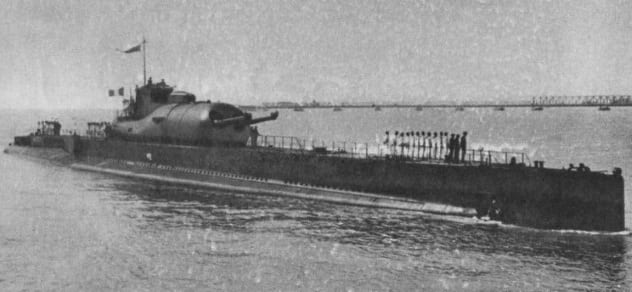
At the time it was launched in 1929, the Surcouf was the largest submarine in the world, built to rival the ever more advanced U-boats put out by the German Navy. When Germany invaded France, the Allies were fearful that they would also seize control of French submarines. The Surcouf was ordered to Plymouth, England, and the French crewmen didn’t exactly enjoy being boarded by their historical foe, despite being on the same side, and there was a fight onboard which resulted in four deaths.
Tension didn’t exactly stop after the fight. Each side of the French forces believed the other was secretly working for the Germans, and the British even suggested that some French ships attacked British ships. Eventually, the Surcouf was ordered to the Pacific and stopped in Bermuda to refuel. In February 1942, she disappeared in the Caribbean off the coast of Panama and was never heard from again.
One theory is that the sub collided with an American merchant ship, which reported striking something in the water. Some people credit the loss of the Surcouf to the Bermuda Triangle, years before it would become infamous.[9] Whatever happened, neither the remains of the Surcouf nor her crew have ever been found.
1 U-537
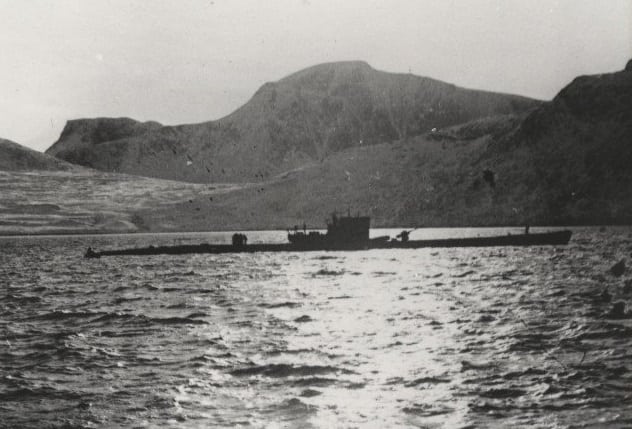
The Germans had some strange military initiatives in World War II, but perhaps one of the most unusual was the scientific outpost they created in the Arctic Circle. Since the Allies occupied the westernmost areas, they were much better able to predict the weather for their naval strategies. That was until Germany decided to set up a weather outlet of their own. This weather station was delivered by U-537, which was outfitted to be able to install the equipment on the northern shore of Labrador.[10]
The submarine persisted north despite pretty intense obstacles: It hit an iceberg and sustained major damage, rendering it unable to submerge. The Germans, however, managed to reach their destination and set up their weather station. They disguised their setup as much as possible, making up a fake Canadian name for their equipment and strewing American cigarette packs around to make it seem like it was an Allied station. On its way back to its port in occupied France, U-537 was attacked three times by Canadian planes but managed to escape.
Louise enjoys coffee, dogs, and people-watching.
Read more creepy sea stories on 10 Real-Life Ghost Ships No One Can Explain and 10 Legends Of Aquatic Humanoid Creatures.








